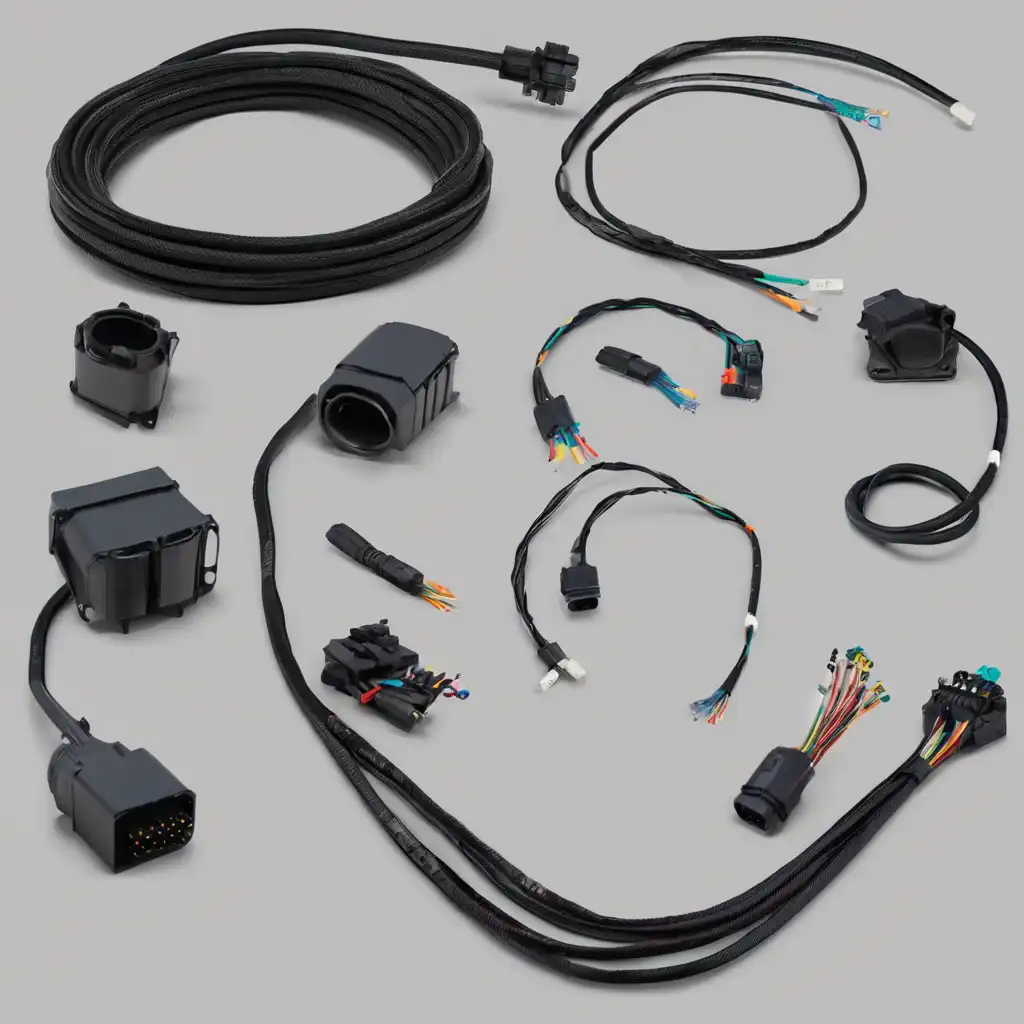As a professional cable harness manufacturer, we understand the importance of organization and efficiency in electrical systems. Cable harnesses, also known as wiring harnesses, are vital to many electronic installations, providing a simplified solution for managing complex wiring systems. Here, we explore seven advantages of using cable harnesses.
- Enhanced security:
The primary advantage of using cable harnesses is the increased security they provide. Consolidating multiple wires into a single bundle significantly reduces the risk of electrical fires. The physical protection of bundled cables prevents short circuits and electrical leakage, which is more common in decentralized wiring environments.
2. Simplified troubleshooting:
Cable harnesses make troubleshooting easier. Technicians can quickly identify and resolve faults because the components and connections are systematically organized. This organization minimizes downtime and increases the productivity of maintenance operations.
3. Reduced installation time:
The pre-assembled nature of cable harnesses dramatically reduces installation time. Harnesses are designed and constructed to fit a specific equipment configuration, which means they can be installed in a fraction of the time it takes to connect wires individually. This efficiency is critical for projects with tight deadlines or time constraints.

4. Improved performance:
Cable harnesses help maintain the system’s performance integrity. By preventing tangling and reducing fraying, harnesses ensure consistent electrical connections. This consistent connection improves the system’s stability, providing optimal performance throughout its life.
5. Cost-effectiveness:
While the initial cost of designing and manufacturing cable harnesses may be high, the long-term savings are substantial. Lower labour costs during installation, reduced maintenance, and a lower chance of electrical failure all contribute to significant overall cost efficiencies.
6. Durability and longevity:
Cable harnesses are more durable than individual wires because they can withstand harsh environments and rough handling. The wires inside the harness are protected by a durable housing that is less likely to deteriorate or break, greatly extending the electrical system’s life.
7. Customization and expandability:
As a manufacturer, we customize cable harnesses to meet specific industry needs. Whether you’re looking for a harness that can withstand extreme temperatures or one that needs to fit into a compact space, customization is always an option. Additionally, harnesses can be designed to adapt and expand as systems evolve.
The environmental impact of quality cable harnesses:
In addition to the benefits of cable harnesses, it is critical to consider their environmental impact. High-quality cable harnesses contribute positively to the environment in several ways.
Reduced Material Waste: Cable harnesses minimize waste by using optimal lengths of wire and reducing the need for replacement due to durability. Less material needs to be produced, and less waste is in landfills.
Energy Efficiency: Efficient electrical connections mean less energy is wasted due to poor conductivity or heat loss. This efficiency reduces the carbon footprint of the operating system.
Recyclability: Many of a wire harness’s components can be recycled at the end of their lifecycle, further minimizing their impact on the environment.
Careful manufacturing practices can enhance these environmental benefits. As an experienced wire harness manufacturer, we aim to fulfil our customers’ customers’functional needs and responsibly contribute to ecological sustainability.
In summary, wiring harnesses offer countless benefits that enhance the performance and cost-effectiveness of electronic and electrical systems. From an environmental perspective, it is clear that investing in high-quality wiring harnesses is not only suitable for business operations but also good for the planet. This synergy between functionality and sustainability motivates us to improve and innovate our manufacturing processes continuously.



